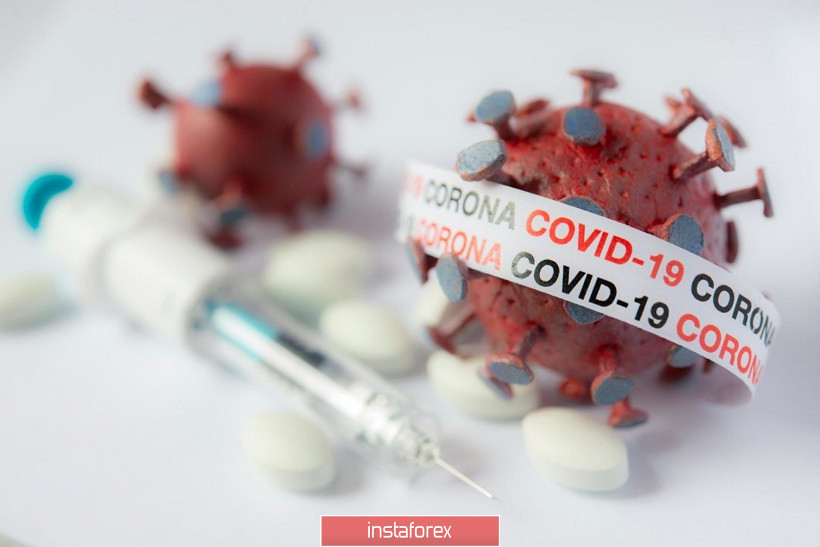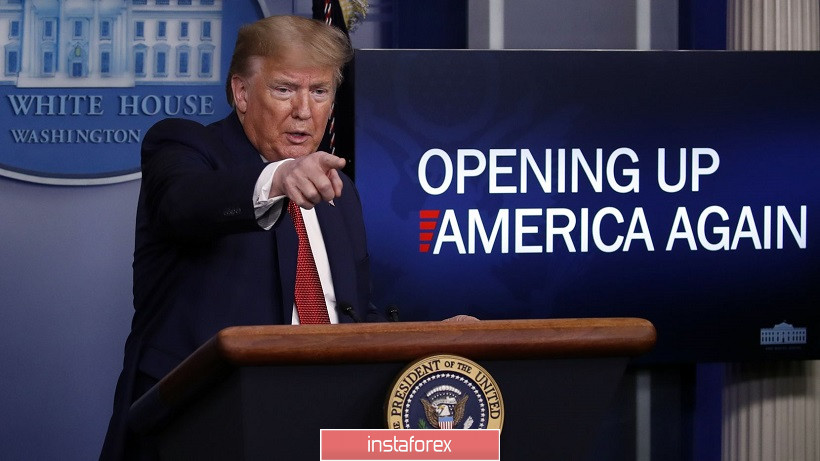The confrontation between buyers and sellers of the euro/dollar pair continues: throughout the trading week, the bears exerted constant pressure on the pair, but were unable to gain a foothold below the mark of 1.0850. Today, during the Asian session, another attempt was made – after the release of data on the growth of the Chinese economy, traders updated the weekly low, reaching 1.0812. The European session on Friday was also followed by dollar bulls – the dollar index again jumped to the hundredth level, reflecting increased demand across the market. And yet, despite the momentary gains, the US currency remains vulnerable – any more or less tangible fundamental factor in favor of the growth of risk sentiment can turn the greenback in the opposite direction. Which is exactly what happened today.

But first, let's talk about the factors in favor of the dollar. Data on China's GDP growth was worse than expected, despite the extremely pessimistic forecasts of experts. The indicator for the first quarter fell to -6.8% (with the forecast of a decline to -6%) – this is the worst result in the entire history of observations, that is, since 1992. Retail sales in China also collapsed as expected, with much stronger forecasts – up to -19% (against the expected decline to -12%). But the indicator of industrial production unexpectedly turned out to be in the "green zone", although in a negative area. The indicator in March slowed by just 1.1%, while experts expected it to decrease by seven percent.
But in general, today's release left a depressing impression, especially against the background of the recently published report of the IMF, whose experts predicted a decline in the world economy this year by 3%. ECB chief Christine Lagarde added fuel to the fire today. According to her, uncertainty will remain high, and this fact makes it "extremely difficult" to predict the potential scale and duration of the inevitable recession. According to her forecasts, inflation in the Eurozone is low against the background of the collapse in oil prices, and most likely will continue to weaken in the near future.
After these words, the single currency came under even more pressure. But during the American session, the euro/dollar pair turned around and again exceeded the notorious price level of 1.0850. These price dynamics were due to several fundamental factors.
First, the market reacted to the positive news from the front of the fight against the epidemic. Representatives of the University of Chicago announced a successful clinical trial of an experimental drug from COVID-19. Volunteers introduced the drug Remdesivir, which was previously used for the treatment of the Ebola virus. And as infectious disease specialists have noted, most of the patients who participated in clinical trials of this drug have already been discharged. According to doctors, the experiment involved patients with severe respiratory symptoms of COVID-19 and fever – but their treatment took less than a week, and, according to scientists, the duration of such therapy should not be more than 10 days. The manufacturer of this antiviral drug is the American biotechnology company Gilead Sciences, which developed it for experimental treatment of the Ebola virus. In turn, the World Health Organization has already stated that Remdesivir can help in the treatment of coronavirus.
It is worth recalling that the world's leading scientists are currently developing 70 vaccines against COVID-19. 67 drugs are undergoing preclinical research, and three have already begun testing on humans. According to even the most optimistic estimates, the vaccine can be finalized and approved by the beginning of next year. Therefore, if the above-mentioned drug Remdesivir really turns out to be a panacea against coronavirus, then, in this case, we can talk about a turning point in the fight against the epidemic. Such prospects reduced anti-risk sentiment in the market and put significant pressure on the US currency.
The market also reacted today to the White House's intention to ease the quarantine regime in the United States. America still holds the leading position in the sad anti-rating – both in the number of cases of COVID-19 and in the number of deaths from the virus. But according to Donald Trump, his country has already passed the peak of the epidemic and is ready to open the economy. This process will be carried out gradually, in three stages. First of all, some restrictions will be lifted from those areas of the country where no new cases of coronavirus infection have been registered in the past seven days. According to the American President, we are talking about "30 percent of the US territory". In his opinion, restrictions can be lifted in those areas "even tomorrow". At the second stage, educational institutions will be opened, groups of up to 50 people will be able to gather, and optional trips are allowed. Other measures will remain the same. The elderly at this stage will be able to visit with special permits. The third stage involves the removal of restrictions for vulnerable groups of people while maintaining their social distance. All institutions will be able to resume work. At the same time, Trump did not name clear criteria for the last two stages and the timing of their implementation.

But what is especially important – contrary to his previous statements, Trump gave the governors the right to determine the order and time of lifting the restrictive measures themselves. Earlier, he insisted on their absolute submission, thus provoking a serious political conflict within the country. Now the head of the White House has leveled concerns about this, exerting indirect pressure on the dollar, which in turn was in demand as the main protective tool.
Thus, dollar bulls have lost their main trumps, although there are not many reasons for optimism. However, the contradictory fundamental background allowed the euro/dollar bulls to keep the pair above 1.0850. If the risk appetite continues to grow next week, the pair will not only return to the ninth figure but also test the resistance level of 1.1090 (the upper line of the Bollinger Bands indicator on the daily chart). Much will depend on the dynamics of the spread of the coronavirus over the weekend – if the US and the main European countries (Britain, Italy, Spain, France, Germany) show a downward trend, the euro/dollar pair may open the next trading week with the northern gap, heading to the above resistance level.





















